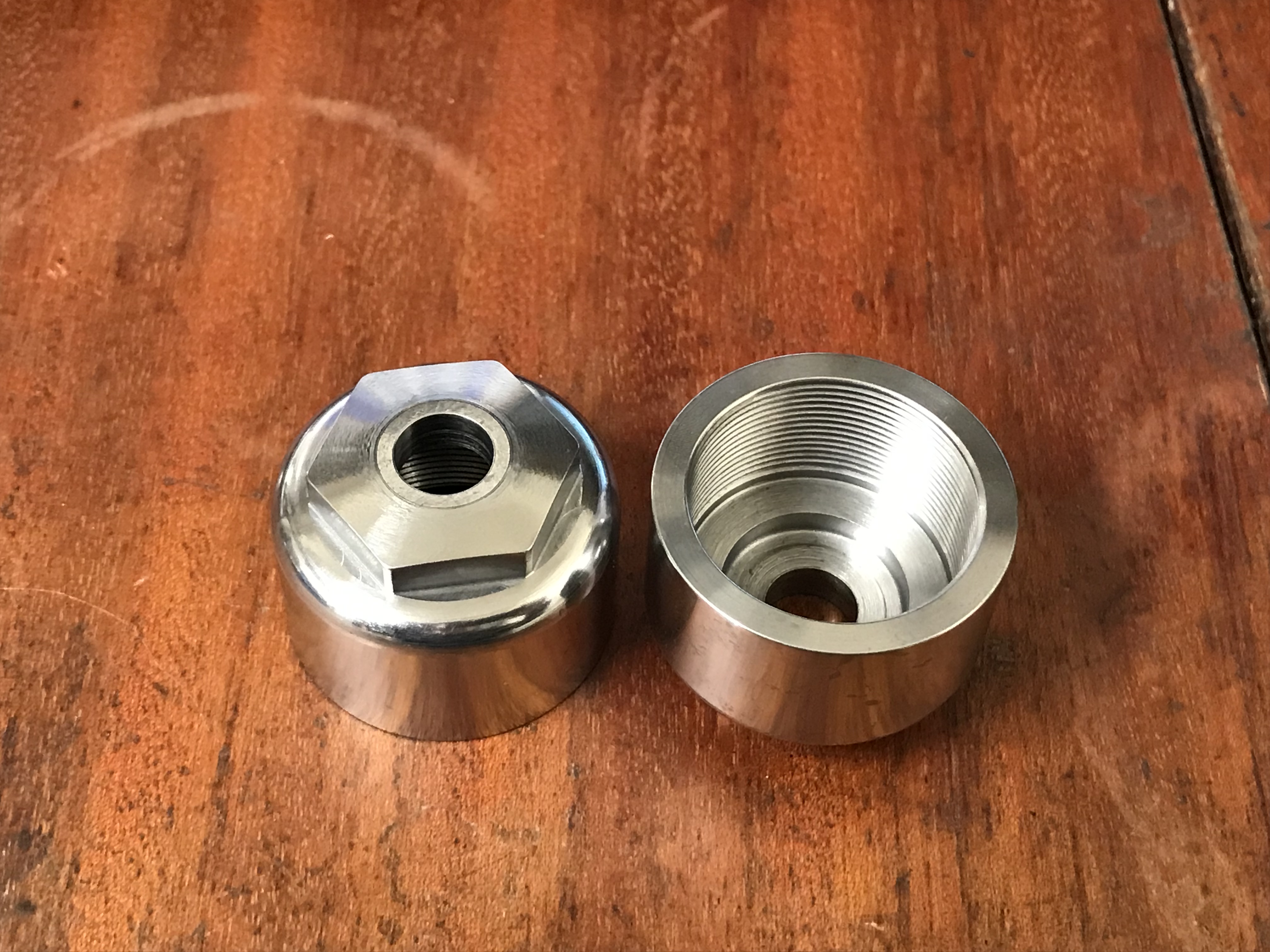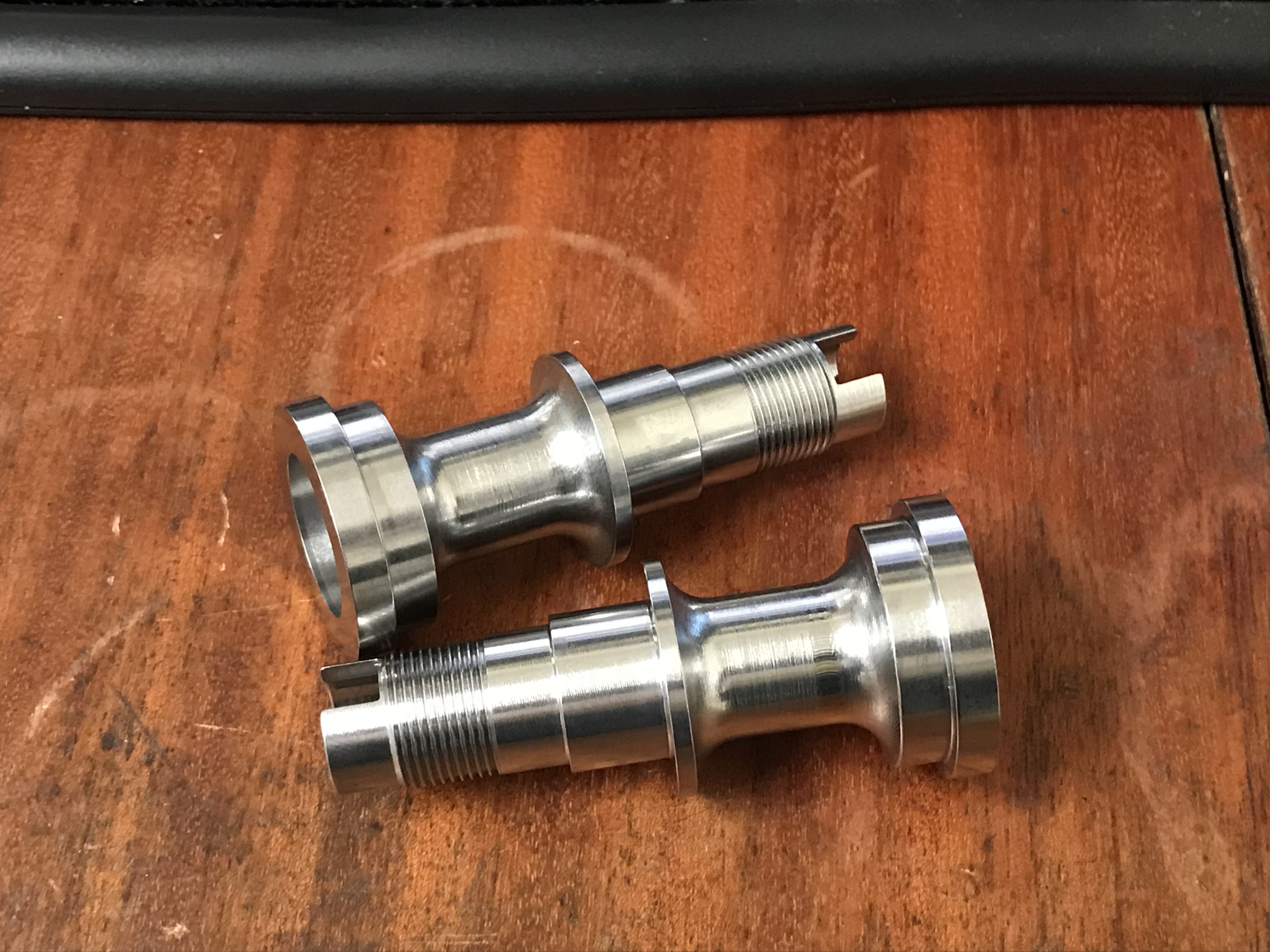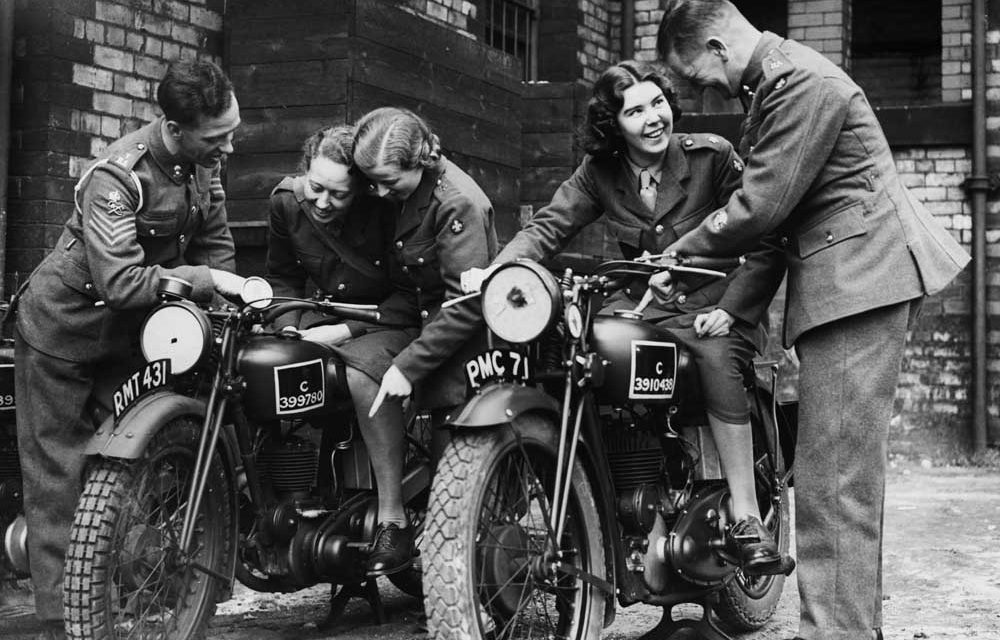Just a small part, but I'm still at it. Not related but a rear sprocket spindle picture is also included.


email (option): pes.sales@btconnect.com
How long does it take to machine that spindle?
Not very long Ian. The two milling ops are down as 2 minutes each including handling. I need my wrist slapped for the turning op as I forgot to note the time.
email (option): pes.sales@btconnect.com
Thank for that Mark. In a previous life I was an Auto- Setter I used to run nine machines, a job long gone now with CNC.
I worked as a Big capstan setter operator, machining stainless castings once Ian. They had Wickman multi spindle machines there that women ran at night because they were so noisy. They fascinated me. I hate doing production work, so at PES we play at engineering just making small numbers of bits to keep your toys working ;)
email (option): pes.sales@btconnect.com
['In a previous life I was an Auto- Setter I used to run nine machines, a job long gone now with CNC...']
I did my apprenticeship with Brown and Sharpe and as part of that worked on their auto section for a couple of months...Back then they built a range of autos and also the first NC machining centres...It seemed like a miracle at the time when the first cabinets were produced that allowed the machine to do radii...How times change...Ian
email (option): ian@wright52.plus.com
I had Brown and Sharp, Bsa, Index and Peterman this was a multi spindle machine.
Yes I'm still doing this. Some brackets I had cut out.
email (option): pes.sales@btconnect.com
More fork parts,
15-5249 Link bolt, bottom front, 8 3/8”
15-5247 Link bolt, bottom rear, 8”
15-5190 Link bolt, top, 5 ¾”
Made from High tensile EN24T steel. The Nut is fitted on a tight thread, before being Nickle Bronze welded before machining a dome.
email (option): pes.sales@btconnect.com
Soooo nice!
Almost tempted to buy a M20 wreck just to fit one of these...ha!
Thank you Vincent, but I'd recommend leaving things alone if they are working.
They will be zinc and clear plated before being supplied.
I had a go at straightening the ones from my NOS forks and was shocked at how soft they are! When I try to straighten the links I wonder if they are soft too?
email (option): pes.sales@btconnect.com
The bolts don't really have any reason to wear or structural purpose. They are simply to keep the links into their bushes and allow a tiny bit of end float. If the bolts are tightened too much the links will wear into the forks/yokes. Ron
email (option): ronpier@talk21.com
This weekend was supposed to be for more building work on our works extension. Weather put pay to that.
As the Milling machine was empty I thought it was a good idea to make the tooling to machine the fork links.
The first job was the straighten the links, it might have been a better idea before sending them off for heat treatment. Though they could distort during heat treatment. You never know what horror will come back from heat treating.
The reason beyond the obvious for them to be straight is that when clamped in the jig they will not bend. Being spring like the parallelism of the bores will be lost.
So as Anita was machining the links, I was on straightening duty and pin pushing.
Despite our best efforts the parallelism of the pins wasn't perfect. More tweaking required.
Even though these are made to tighter tolerances than would have been achieved by BSA, I feel that these are best supplied in matched pairs.
Also including our high tensile bolts.
This way we can be sure when we supply links, we'll know they look at each other before shipment.
The unthreaded link should slide easily on the bolts as shown in the picture below.
we haven't machined the lower links yet as more tooling needs to be made, but it is progress.
Having case hardened pins and tempered links, these should give a stiffer feel to the bike.
Also have a longer service life than the originals.
The top link set will cost £120.00ukp
email (option): pes.sales@btconnect.com
The top links didn't play as well as the bottom ones. 15-5239 was a right pain. Firstly to straighten, then to jig. Not forgetting another jig to machine the other side. There was nothing I could use as a datum for all axis, so the pin bore has to be clocked up for each one.
If these links sell, I think I will redesign the moulds to make life easier later. At least I have a viable product and not a box of scrap.
I don't have a price for this set, but it will be a bit more than the bottom ones due to the extra work.
There should be 6 complete sets in a couple of weeks once the bolts are plated.
email (option): pes.sales@btconnect.com
Mark in your last post, have you got your top and bottom mixed up? Or maybe it's me?
Ron
email (option): ronpier@talk21.com
Thank you Ron, at least someone knows what I'm doing. Yes this last set are the bottom set.
email (option): pes.sales@btconnect.com
Sorry everybody, just double checked all the numbers again. Not only can I not tell the bottom from top I can't add up.
So..
Upper link set with bolts and nuts £144.00
Lower link set with bolts and nuts £176.00
Mark
email (option): pes.sales@btconnect.com
Bolts finally back from the platers,
So upper and lower link sets are on the the web site now.
Also the link blots.
https://pesltd.uk/?product=15-5239&ptno=15-5239
https://pesltd.uk/?product=15-5241&ptno=15-5241
https://pesltd.uk/?product=15-5241&ptno=15-5241
https://pesltd.uk/?product=15-5249&ptno=15-5249
https://pesltd.uk/?product=15-5247&ptno=15-5247
email (option): pes.sales@btconnect.com
